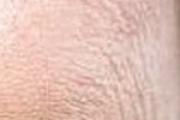Drops against ear mites for dogs. Ear mites in dogs
Causes of otodecosis
The disease is caused by a small insect that is almost impossible to detect with the naked eye. It gets on the inside of the animal’s ear, gnaws its way into the epidermis and settles there. This happens very quickly.
Ear mites are unable to long time be without an owner, so a dog can only become infected from another dog or cat, in in rare cases– from contaminated objects and grass. There are often cases when a person brings a tick into the house on his clothes.
Important! It is quite simple to determine that a dog has otodecosis. If skin lesions are located only in the auricle, then this is sure sign presence of ear mites. If the dog scratches its paw or belly vigorously, then the pathogen is most likely different.
Ear mites are not just an unpleasant “guest” on a dog’s body, as they pose a real health hazard. Otodecosis quickly spreads throughout the auricle, affects the eardrum and is able to penetrate through it deep into the ear canal.
An ear mite is only dangerous if it is discovered late. If detected in time, the disease is highly treatable and, most often, goes away without a trace.

Symptoms of a dog having ear bream
The first symptoms appear a few days after the tick gets into the dog's ear. The dog begins to feel severe discomfort in the auricle and shakes its head, trying to shake out the harmful insect.
Usually after this the following symptoms appear:
If all or almost all signs are detected, then you need to consult a doctor as soon as possible. Timely treatment will allow your four-legged friend to avoid complications and shorten the recovery period as much as possible.
Do not try to treat your dog yourself or buy medications, even if you are absolutely sure of the diagnosis, since some diseases can cause some similar symptoms. The veterinarian will take the epithelium for analysis and identify the presence of the causative agent of ear scabies (if any), and then prescribe the necessary medications.
 At the first symptoms or detection of ticks, you should show your pet to a veterinarian.
At the first symptoms or detection of ticks, you should show your pet to a veterinarian. Treatment of ear scabies
After the diagnosis is confirmed, the dog is prescribed treatment at home with drops and ointments. Treatment consists of the following stages:
Assortment medicines that help get rid of ear mites is quite large. The most common ointments are Aversectin and Amidel-gel; drops include Dekta, Aurikan, Amit, Tsipam, Otovedin. The selection of the drug and determination of the dosage should be carried out exclusively by a doctor! These products are toxic and are not suitable for all animals. The wrong dosage can cost the health and life of your pet.
Important: Ear mites in cats and dogs cannot be treated folk remedies without consulting a specialist. Most of the methods that can be found on the Internet are destructive not only for the tick, but also for the animal.

Prevention of ear scabies
It is impossible to completely insure your pet against infection with ear mites, since the dog needs to go outside. But so that you don't have to once again to be treated, it is necessary to take preventive measures.
It is necessary to regularly examine your dog's ears to see the first signs of ear scabies. In order not to confuse dirt and sulfur with tick waste products, you need to regularly (once a week) clean your pet’s ears with a cotton swab dipped in hydrogen peroxide.

To reduce the likelihood of infection, the veterinarian is recommended to purchase a special protective collar for the dog and periodically use a special shampoo.
As the disease develops, the pet simply tears its ears, groans, and begins to rub them on the floor or sofa. The owner should not neglect the disease and should conduct a thorough examination of the pet. Complications of this disease can be otitis media, meningitis, and inflammatory processes in the eardrum.
It is not uncommon for a dog diagnosed with ear mites to lean toward the affected ear. In advanced cases, the eyeball may fall inward. The consequences of this disease are quite serious. They can threaten your pet with hearing loss or even lead to his death. If the disease is not treated, then purulent discharge with a characteristic odor begins from the animal’s ears, and the outer side of the ears begins to go bald.
As the disease progresses, the infected surface hardens and becomes crusty. From the outside it can be mistaken for dirt. If treatment is not treated in a timely manner, a secondary infection may accompany the inflammation.
Symptoms of otodectosis in dogs
The dog begins to eat poorly, and sometimes even loses its appetite. She becomes restless and tilts her head towards the affected surface. In order to understand the causes of concern, it is necessary to examine the ear by cleaning it with a cotton swab. After this, cotton swab brought to a veterinary clinic, where they are examined under a microscope. Diagnosis of the disease can only be carried out by a veterinarian.
Consequences of otodectosis
Causes of the disease

Treatment of ear scabies in dogs
After this, measures are taken to soak and remove crusts. If the disease is in an advanced stage, this procedure may cause pain in the dog. After this, the medicine is injected into the cleaned ear. Medicines are prescribed by a doctor individually for each specific animal. As additional measures The veterinarian may prescribe ointments for fungal infections, a course of vitamins, and anti-inflammatory drugs. A course of physiotherapy will be beneficial for the dog.
Most often, Aurican and Amitrazine are used for treatment. Additionally, the ears must be treated with ointments that eliminate inflammatory process. The procedures are carried out only after the ears have been treated and cleaned of dried crusts. To soak the crusts, you can use Mixstream spray. The dogs spray one ear at a time, then wait a few minutes and remove the scales with gauze treated with an antiseptic.
Processing procedure
Cleansing the auricle from wax, pus and crusts can be done by moistening a piece of bandage with furatsilin or hydrogen peroxide and wrapping it around index finger. Wiping with gauze inner surface auricle. But it is impossible for the antiseptic drug to flow inside the ear canal.
You can also treat your ears with warm vegetable oil or drinking tea. This procedure is best carried out using cotton swabs. It is worth remembering that two ears are treated at once, regardless of whether there is a lesion on them or not. When cleaning the ear, use a new bandage or gauze each time. It is recommended to pour drops of “Tsipam”, “Bars”, “Surolan” into the pet’s ear.
The outer surface of the auricle is smeared with sulfur ointment, Vishnevsky ointment. The medication is first heated, lightly massaged, and applied to the affected surface. Medicines can only remove adult ticks. Therefore, the treatment must be repeated 7–10 days after the initial course of treatment.

It is worth noting that a contraindication for many medical supplies is up to 2 months old. Therefore, treatment of a puppy should be trusted only to professionals.
Preventive measures
From time to time, the owner needs to carry out hygienic treatment of the dog's ears. If you do not know how to do this, then you need to contact a veterinarian who will verify the correctness of the procedure. Once every 6 months, the animal should be examined by a doctor in a specialized clinic.
If the dog does not want to have his ears treated
Of course, procedures and treatment are not the most pleasant event for any pet. Therefore, the owner needs to be nearby at this time and treat the dog with treats. During the procedure, it is recommended to stroke and praise her. Thus, the dog will treat the treatment much more simply and not pay attention to painful sensations. To absorb the medicine more quickly, you can lightly massage the ears and pet the dog so that it does not shake its head and the medicine does not spill out.
What do you prefer to feed your pets?
Poll Options are limited because JavaScript is disabled in your browser.
Porridge with various additives 46%, 7292 vote
A good owner will never let the situation get out of his control; he will definitely pay attention: if the dog begins to scratch his ears with his paws and shakes his head restlessly, this means that there is a high probability that the pet is being bothered by ear mites. What is this invisible enemy and how to fight it?
Causes of problems, which animals are more susceptible
The disease is called otodectosis. Its pathogen settles in the animal’s ear, feeding on the skin epithelium, and if it is not stopped, it penetrates deeper and deeper, to the brain and can lead to even more dangerous disease– meningitis. In the most severe cases, the animal cannot be saved.
The enemy is really microscopically small: the arthropod of the arachnid order is less than a millimeter. The female lays eggs in the animal’s ear, from which larvae hatch four days later. This starts a dangerous mechanism that needs to be stopped as soon as possible.
Dog owners wonder where their home-grown, well-groomed pet gets the infection from. The fact is that it is transmitted from animal to animal, which means any contact (friendly sniffing or bullying) can cause serious problems.
The tick is dangerous for dogs of any age, but most often symptoms of the disease are found in puppies. They can become infected from their mother and other domestic animals, not only from dogs, but also from cats, ferrets, and rabbits.

You also need to limit your pets’ contact with homeless animals, because ear mites in dogs deprived of their owner’s attention are a common occurrence. By the way, if your pet does become infected, do not look for symptoms of the disease in yourself - ear mites happen in dogs, but never in humans.
Try on the role of Doctor Aibolit: clean the dog’s ear and examine under a magnifying glass what you manage to pull out of the ear on a piece of black or white paper. A magnifying glass, of course, is not a microscope, but even its capabilities are enough to examine moving microorganisms of light gray color.
If you manage to determine their presence, then you will certainly know that your dog has ticks. If an examination under a magnifying glass does not show anything, this will mean either that the pet is healthy, or that the disease is in the very early stages of enemies - the minimum, and your pet just needs regular prevention of tick infestation - inspection and cleaning of the ears.

Watch your pet carefully. Here are some symptoms (besides furious ear scratching) that should raise your alarm:
- dark brown discharge from the ears,
- skin irritation in the temple area,
- the dog experiences itching in the neck area,
- The dog tilts its head to one side and tries to keep it that way.
If these are your dog’s problems, then you will need the help of a specialist.
Well, you can provide your pet with additional protection- Bathe him using insecticidal shampoo. Also, make it a habit to clean your dog’s ears. Purchase a drug from a veterinary pharmacy that softens wax that accumulates in the ear, and use it regularly.
After cleaning your ear, examine the cotton swab: if it is dirty, carry out a similar procedure the next day, and then again and again, until the swab is clean. After this, you can reduce the number of cleanings to one per week.

Current trends
True, these drugs are not suitable for small animals, but either a veterinarian or a pharmacy worker will warn you about this.
Treatment
If symptoms of the disease have just begun, try getting rid of the tick with home remedies. The treatment is simple: clean your pet’s ears with freshly brewed green tea or one of the following mixtures:
- olive oil and garlic,
- sunflower oil and kerosene (equal parts),
- sunflower oil and iodine (4:1).
It’s good if after these manipulations the signs of the disease disappear, it means that you managed to catch the disease at the very beginning, while the tick population is still small. However, if ear mites in dogs have already firmly established themselves in new “positions”, home treatment may not give the desired result. The ear canals will need to be cleaned or flushed.

It is better if a veterinarian does this or at least prescribes the necessary medicine (usually ear drops). But experts do not recommend overzealous cleaning of the ears with cotton swabs on sticks: there is a high risk of pushing mites deep into the ear, and it will be very difficult to remove them from there.
A specialist may recommend ointments for your pet or even prescribe antibiotics if the symptoms of the disease are very pronounced. However, you need to keep in mind the risk of intoxication in your other animals (if any). The situation is that dogs love to lick each other, and in order for the medicine not to get on the pet’s tongue, it must be given time to dry.

How can a veterinarian help?
Having studied all the signs of the four-legged patient’s disease and carried out laboratory tests wax from his sore ear, the veterinarian will prescribe appropriate treatment. In addition, with the help of special instruments, he will be able to determine whether everything is in order with the eardrum, whether there is any damage (such cases, unfortunately, are not uncommon).
If any are found, you will have to select medications with great care so as not to harm the animal’s body.
Ear mites in dogs are a highly contagious and rapidly developing disease. Primary diagnosis is carried out on the basis of primary symptoms. What are the features of treatment at home, how to choose drops, ointments or sprays, how effective are folk remedies.
Pay attention! The risk of infection with ear mites increases significantly if your pet has been in contact with carrion.
Are ear mites transmitted to humans from dogs?
Ear mites require certain conditions (humidity, temperature, amount of food) to live and reproduce. Are pet ear mites transmitted to humans? Usually, no... but there are nuances.
Preventing ear mite infection in dogs
Most reliable way To protect your pet from an extremely unpleasant, rapidly developing infestation is timely and regular prevention.
Read also: Tracheal collapse in a dog: basic information, treatment and rehabilitation rules
Diagnosis of the disease - symptoms and signs of ear mites in dogs
Diagnosis of ear mite infestation is based on symptoms and signs that become obvious fairly quickly. However, there is a risk of confusing ear mite infestation with acute otitis media. How to make the correct diagnosis and select adequate treatment?

Naturally, the most reliable option is to go to a veterinary clinic. To confirm the diagnosis, a number of procedures are performed:
To clarify the situation, several repeated scrapings are taken at intervals of 1–2 days. The problem is that on early stages infection, the population of ear mites may be too small to detect.
Important! Dogs with short muzzles may experience conjunctivitis, rhinitis, breathing problems and other ailments caused by swelling of the mucous membranes due to infection with ear mites.
What does a tick look like and can you see it?
Without special equipment, you will not be able to find out what a tick looks like, or rather, you will not be able to examine it in small details. At the stage when a brown mass has begun to accumulate in the dog's ear canals, the following algorithm will help confirm an ear mite infestation.
You will need a black sheet of paper, a hygienic cotton swab, disposable gloves, magnifying glass and good lighting. The algorithm of actions is as follows:
- Gently hold the dog's head and collect a sample of earwax. You need to try to capture as much as possible brown discharge at one time. If it doesn't work the first time, you need to use a clean cotton swab for the second try.
- By placing a cotton swab with a sample of ear discharge over black paper, gently tap it with your finger.
- Examine the sheet carefully with a magnifying glass.
If very small white specks were found on the paper, these are ear mites. With a massive infestation, you may notice that the grains are moving around. After confirming the diagnosis, be sure to destroy the paper and all hygiene items that came into contact with the dog’s ear secretions.
Read also: Do dogs have headaches? How not to miss dangerous symptoms
How to distinguish otitis media from ear mites?
If you do not have the opportunity to see a veterinarian, it is important not to make a mistake in diagnosis and prescribe adequate treatment. How to distinguish otitis media from ear mites in a dog? The task is truly difficult, since both diseases cause significant discomfort in the pet, leading to constant itching of the ears.
The exception is a sluggish form of otitis, in which the dog experiences acute pain, but there is no discharge from the ears.
Home treatment for ear mites in dogs
If ear mites in a dog are diagnosed in time, the disease is not life-threatening. Usually, treatment is carried out at home. In advanced stages of the disease, when there is a threat of pus leaking into the ear canals and perforation of the eardrum, it is wiser to treat the animal in a hospital setting.
When treating at home, it is important to follow a number of rules:
Important! Do not use antibiotics to treat ear mites unless prescribed by a veterinarian. Antibiotics only affect bacteria and germs, so they are used only in cases of infection of scratches and ear canals.
Drops
Drops must be used strictly according to the instructions. Carefully read the contraindications and duration of the treatment course. Many medications are contraindicated for puppies under the recommended age or weight.
The following medications are commonly used to treat ear mites:
- Otovedin.
- Amit Forte.
- Bars Forte.
- Otoferonol Gold.
- Akarostop (ProVet).
- Demos.
- Decta.
- Amitrazine or Amitrazine Plus.
- Oricin.
Ear scabies or otodectosis is an invasive disease of dogs, cats and others caused by the activity of Otodektos cynotis mites. These insects are located on the inner surface of the auricle and in the external auditory canal, feeding on particles of the epidermis, blood and earwax of animals.
Signs of illness
At the beginning of infection, dogs experience mild itching, which intensifies as the disease progresses. They behave restlessly, shake their heads, rub their ears on various items, scratch the ears with their claws, tearing them until they bleed. As a result, bald patches, scratches, wounds and ulcers form. Animals react painfully to scratching behind the ear; in advanced cases, they are not allowed to touch them.
The main sign of ear mites is brown or gray-brown discharge with unpleasant smell. At the beginning of the disease, the discharge from the ears is serous, then mixed with pus. Mixing with the waste products of the tick (feces), the secretions dry out and form scabs and brown crusts.
Infection occurs from other carnivores, most often from cats and stray dogs. Often these insects are diagnosed in puppies aged 1 to 4 months. Their infection occurs in the mother's nest.
What is the danger
Incorrect or untimely treatment of otodectosis can have serious consequences. For example, such as perforation of the eardrum, inflammation of the middle ear (otitis), meningitis (inflammation of the membranes of the spinal cord and brain), Horner's syndrome and labyrinitis. With these diseases, a retraction of the eyeball into the orbit and a tilt of the head towards the diseased ear are noted. In addition, this can cause hearing loss or even death of the dog.
If the disease becomes chronic, ticks cannot be detected during this period, since after laying larvae they die. And all drugs are effective only in relation to adult animals. As a result, after 10-14 days, adults emerge from the eggs again and the cycle resumes. It is important during treatment not to miss this moment and not to allow the disease to develop into a chronic stage.
How to treat
First of all, you need to make sure that the disease is caused by ear mites. Why, at the first symptoms, you need to contact a veterinarian, who will conduct tests and prescribe the right treatment. It is better not to self-medicate dogs, because the wrong medicine or its dosage can lead to disastrous results - for example, deafness.
If it is not possible to take your pet to a veterinarian, you can take dried crusts of exudate or scabs for testing. To do this, you need to prepare a clean container (a small glass jar), pour boiling water over it, dry it and clean the dog’s ears with a cotton swab. All collected material is sent to the laboratory. The results will tell you quickly.
After you have been prescribed treatment, follow a number of recommendations in the future. Remember that any drops must be instilled into clean ears, otherwise the medicine will not work. To clean, we take cotton swabs and additionally wrap a layer of cotton wool so that we do not inadvertently damage the eardrum. Soak a cotton swab in hydrogen peroxide or infusion medicinal chamomile, or green tea (whoever has what) and carefully, with rotational movements, wipe the auricle, removing all crusts, plaque and other dirt.
A new stick is used for each ear to avoid re-infection of a healthy one.
Also, during treatment, drops are dripped into both ears strictly according to the instructions, even if only one is infected. The course is repeated after 10-14 days again at the same dose, because the drugs act only on adults, as mentioned earlier. It is important not to forget about this and prevent a new breeding cycle of insects.
If the mite appears again, it means that you applied the medicine to insufficiently clean ears, or it did not get in the right amount (shaking ears), or your dog has a weakened immune system and her ears are a very favorable environment for them.
Medicines
Otibiovin, Mastiet-Forte, Anandin Plus, Otoferonol Gold, Otovedin and many others, always warm and in both ears. Damaged skin around the auricle is lubricated with anti-inflammatory and acaricidal ointments (Konkov, Wilkinson, sulfur ointment and others).
Folk remedies for treatment
Take kerosene and sunflower oil in equal proportions, mix, dip a cotton swab in the resulting solution and lubricate the inner surface of the ear. After a day, positive changes are noted, the procedure is repeated 3-4 times.
Another method is to take 1 part iodine (alcohol solution) and 4 parts sunflower oil or maybe glycerin. Lubricate the inner surface of the ear. A day later the procedure is repeated.
It is up to you to decide whether to use these methods; most likely they are effective in initial stages infection and should not be neglected drug treatment, but if there is no veterinarian, then do not delay and urgently take the above measures.
Some tips
If you have trouble putting drops into your dog's ears, you can prepare a water solution. Take 1 ampoule of Butox-50, dilute it in 1 liter of water, pour it into a spray bottle and spray it inside the ear twice. The procedure is painless for the animal and the advantage is that the solution evenly covers the entire affected surface. After 7-10 days we repeat spraying. You just need to avoid getting the composition on the mucous membranes of the eyes, nose, and mouth.
To prevent infection with ear scabies, you should avoid contact with stray animals and monitor your pet. You should check and clean your dog's ears regularly. Also use acaricidal collars on walks and when going into the forest.














